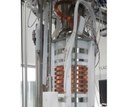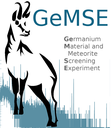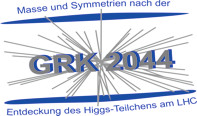Nachrichten

XENONnT Paper in Physical Review Letters' Collection of the Year 2024
The article 'First Indication of Solar B-8 Neutrinos via Coherent Elastic Neutrino-Nucleus Scattering with XENONnT' by the XENON Collaboration has been selected as one of the highlights published by the journal Physical Review Letters (PRL) in 2024.

Rare meteorite found after fireball observation in Oman
Small rocks constantly penetrate the Earth's atmosphere and create shooting stars. Only rarely a meteorite found can be attributed to a fall event. This was achieved with the cameras of the Oman Meteorite Monitoring Project. On December 23, 2023, a fireball was recorded and the meteorite's trajectory was reconstructed. This enabled it to be recovered in the desert of Oman. The meteorite, named "Raja", is a rare enstatite chondrite and was recently added to the international meteorite database.

Seltener Meteorit nach Feuerball-Beobachtung im Oman gefunden
Kleine Steinbrocken dringen dauernd in die Erdatmosphäre ein und erzeugen Sternschnuppen. Nur selten lässt sich ein gefundener Meteorit einem Fallereignis zuordnen. Dies ist mit den Kameras des Oman Meteorite Monitoring Project gelungen. Am 23. Dezember 2023 wurde ein Feuerball aufgezeichnet und damit die Flugbahn des Meteoriten rekonstruiert. Damit konnte er in der Wüste des Oman geborgen werden. Der Meteorit mit dem Namen „Raja“ ist ein seltener Enstatit-Chondrit und wurde kürzlich in die internationale Meteoritendatenbank aufgenommen.

Marc Schumann elected as XLZD spokesperson
The XENON, LZ and DARWIN collaborations have recently joined forces in the newly established XLZD collaboration. Marc Schumann from Freiburg was elected, together with Dan Akerib from SLAC, as the first spokesperson of the collaboration.

First measurement of a nuclear recoil signal from solar neutrinos with XENONnT
At the IDM conference in L'Aquila (Italy), the XENON collaboration announced today that it has measured neutrinos from the sun for the first time using nuclear recoil signals. The detected neutrinos are produced in the interior of the sun during nuclear decays of the isotope boron-8. When they collide with the atomic nuclei of the XENONnT detector, low-energy nuclear recoils are produced.

XENONnT misst erstmals Kernrückstoß-Signale von Sonnen-Neutrinos
Auf der IDM-Konferenz in L'Aquila (Italien) hat die XENON-Kollaboration heute bekanntgegeben, erstmals Neutrinos aus der Sonne mittels Kernrückstoß-Signalen gemessen zu haben. Die nachgewiesenen Neutrinos werden im Sonneninneren bei Kernzerfällen des Isotops Bor-8 erzeugt. Wenn sie mit den Atomkernen des XENONnT Detektors zusammenstoßen, entstehen niederenergetische Kernrückstöße.
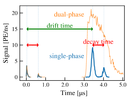
The first single-phase TPC
The Freiburg Astroparticle Physics group demonstrates that a liquid-only single-phase TPC filled with cryogenic liquid xenon can be operated successfully.

XENONnT: Freiburg parts on cover page of Physik Journal
XENONnT components produced in Freiburg prominently featured.

XENONnT Instrument Paper
A comprehensive article on the XENONnT dark matter experiment and all its subsystems was published.

The PANCAKE Platform
The astroparticle physics group published an article describing the design and performance of PANCAKE, the world's largest liquid xenon detector test platform.
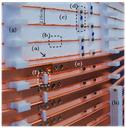
The XENONnT Field Cage
The central component of a dual-phase liquid xenon time projection chamber (TPC) is its field cage. This is the structure that establishes the electric field in which electrons drift across the TPC and ensures that this field is homogenious. A new articles, authored by members of Freiburg's astroparticle physics group, describes the field cage of the XENONnT dark matter detector. The field cage was designed by and many of its components were produced in Freiburg.

Gamma spectrometry for archaeology
Using our low-background gamma spectrometer GeMSE for an interdisciplinary project with geologists and archeologists, we could proof that the iron used to produce an arrowhead in the Bronze Age is of extraterrestrial origin: most likely it comes from an iron meteorite that impacted on Estonia.

First WIMP Search Results from the XENONnT Experiment
One of the world's most sensitive detector to search for the mysterious dark matter particle releases its first results in the search for WIMPs, one of the most popular dark matter particle candidates.

PostDoc Position on XENON and DARWIN open
We are looking for a PostDoc in experimental astroparticle physics to work on XENONnT and on R&D towards DARWIN/XLZD.

First results from a Search for New Physics in Electronic Recoils from XENONnT
XENONnT, the latest detector of the XENON Dark Matter program, shows an unprecedentedly low background which facilitates searches for new, very rare phenomena with high sensitivity. First results clarify an exciting excess observed in the predecessor XENON1T and set strong limits on new physics scenarios.

Die Suche nach neuer Physik mit Elektron-Rückstoßsignalen: Erste Ergebnisse des XENONnT Experiments
XENONnT, der neueste Detektor der internationalen XENON-Kollaboration, zeigt ein bisher unerreicht niedriges Niveau an Untergrundsignalen, das eine empfindliche Suche nach neuen, sehr seltenen Phänomenen ermöglicht. Erste Ergebnisse klären nun ein aufregendes Signal, das im Vorgängerexperiment XENON1T beobachtet wurde, und setzen starke Grenzen für verschiedene Szenarien neuer Physik.
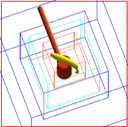
About GeMSE's new Background ... and a banana
A new paper describes the current background level of the group's GeMSE low-background spectrometer, the (almost) fully remote operation of the facility and a novel way to simulate the detection efficiency of complex-shaped (e.g., banana-like) objects.
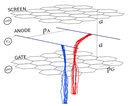
New analysis options in a single-phase TPC
A new paper by the ERC-funded ULTIMATE team studies new options for data analysis opening up in single-phase liquid xenon TPCs.

Freiburg joins SHiP
The Astroparticle Physics Group at the University of Freiburg joins the SHiP Experiment at CERN.

APPEC Dark Matter Report
The APPEC Committee Report on the direct detection of dark matter was published online today.

Polishing the XENONnT DAQ
Scientists from Freiburg and Nikhef make the DAQ system of XENONnT ready for science data.

New low-mass WIMP limit from XENON1T
The world's most sensitive dark matter detector to-date improves upon its own results below masses of ~12 GeV/c².

Search for inelastic interactions of WIMP dark matter in XENON1T
The XENON collaboration has set world-leading constraints on the cross-section of WIMP dark matter interacting inelastically, in a pre-print published on arXiv and co-authored by the Astroparticle Physics group of the University of Freiburg.

Nature News Article on DARWIN
Nature author Elizabeth Gibney writes an article on DARWIN and its science case.




